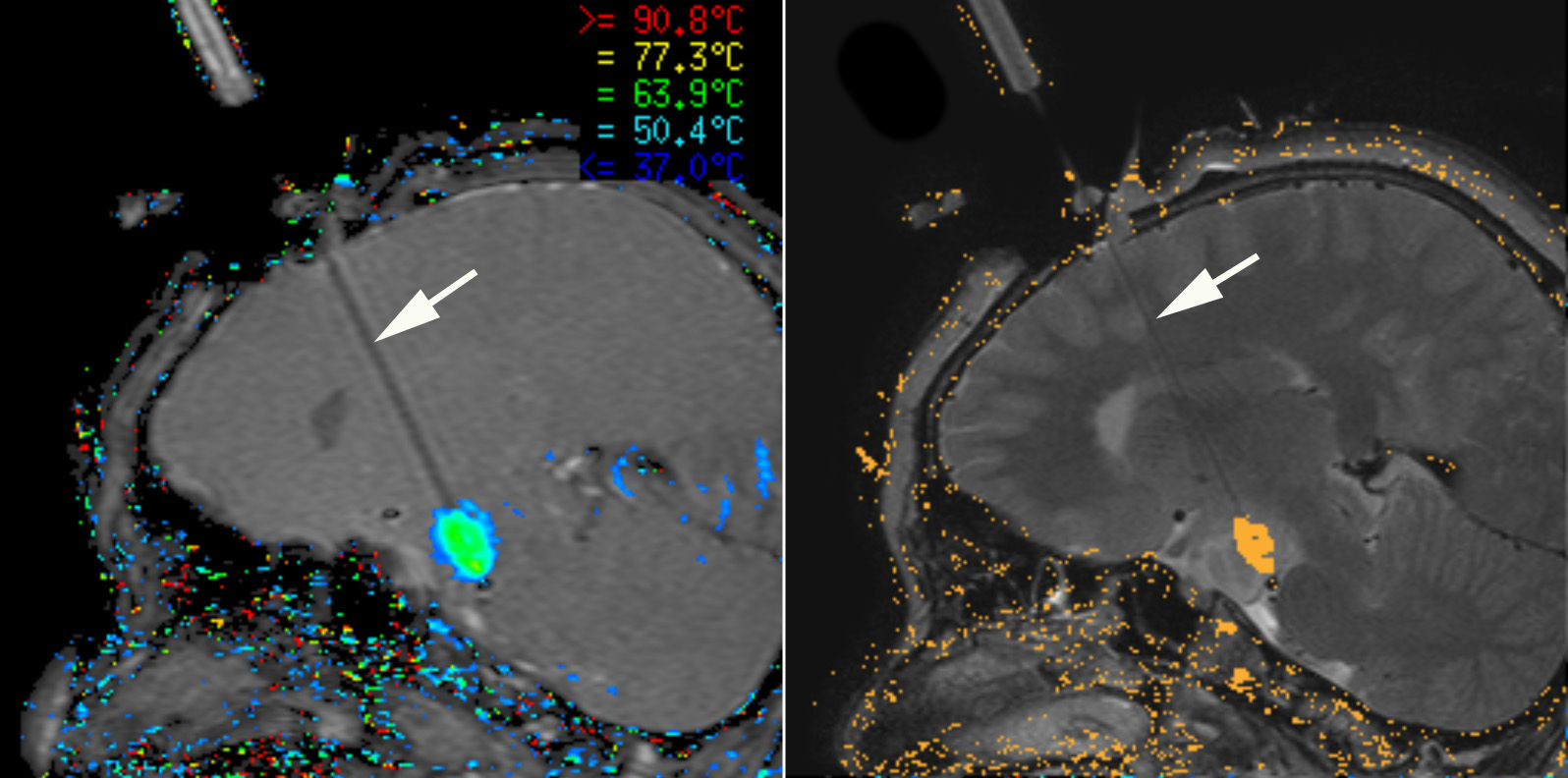
Laser interstitial thermal therapy (LITT)
Laser interstitial thermal therapy (LITT, also called MRI-guided laser ablation) is a minimally invasive surgical technique that allows surgeons to precisely target and ablate tumor tissue.
A laser can be directed to a defined area in the brain, using a thin fiber that is guided to the tumor tissue. The laser transmits energy and as a result, heats up the tissue surrounding the tip of the laser fiber. High temperatures can cause rapid, irreversible tissue damage – in this case, to the brain tumor.

During the operation, real-time MRI generates a live temperature map of the patient’s brain. This allows the surgeon to continually monitor brain tissue temperatures, making sure that the laser-induced damage is effectively targeted to the tumor and restricted from the healthy tissue around the tumor.
Because this technique only requires a small incision and hole to guide the laser fiber through, the treatment does not involve a craniotomy and is considered minimally invasive. The procedure typically last 3-4 hours; much of it is spent carefully positioning the laser fiber, while the laser treatment itself takes minutes. Most patients are discharged the next day.
Tumor types that may be treated using LITT include gliomas and brain metastases. However, use of LITT also depends on a number of factors including tumor size, shape, and location. For example, LITT is most effective on tumors that are less that 3 cm in diameter and have a spherical shape.
This content was reviewed by UCSF neurosurgeons, Mitchel Berger, MD and Shawn Hervey-Jumper, MD.